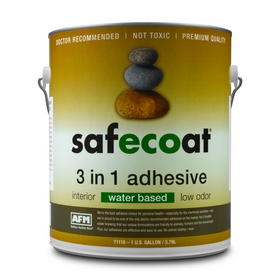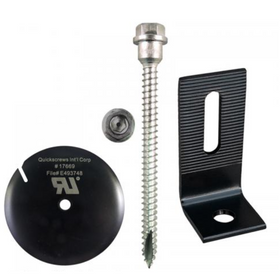
5 Ways To Reduce Your Carbon Emissions
Last Updated: Feb 11, 2025Until recently, the vast majority of us probably thought of global climate change as a manageable problem. We would gradually deal with one through improved technologies, renewable energy solutions, and scientific geoengineering experiments. Society saw people who sounded the alarm on the complete civilizational breakdown as extremists who unfairly discredited our human capability to confront the problems before us.
The UN Intergovernmental Panel on Climate Change (IPCC) presented a report that revealed the actual threat that global climate change presents to our society. The IPCC is far from a radical environmental organization. It's made up of leading climate scientists worldwide who have dedicated decades to studying and analyzing the increasing amounts of carbon dioxide in our atmosphere.
What Does the IPCC Report Say?
The IPCC report, written by over 90 authors and 40 editors, makes some pretty blunt and terrifying claims about the potential threats of unchecked global climate change. It also states that we need to massively reduce the number of greenhouse gasses we are pumping into the atmosphere. If not, there could be devastating consequences like droughts, wildfires, floods, and massive food shortages will become the new normal.
The report takes a no-nonsense approach and states that we can only avoid potential climatic catastrophes by cutting greenhouse gas emissions by 45 percent below 2010 levels by 2030. Even more determinedly, the report tells us that we need to achieve net-zero status by 2050. Essentially, that means that the burning of fossil fuels will have become a thing of the past within the next thirty years.
The IPCC makes the ominous statement that we only have 12 years left (at current rates of greenhouse gas emissions) to change the course of climate change. If we continue to utilize fossil fuels at our current rate until 2030, our earth will surpass the fated 1.5 degrees Celsius increase in global average temperatures. It would likely cause a series of feedback loops that would make it impossible for humans to stop or reverse the effects of global climate change.
While this might indeed seem like a "doomsday" report, we should also look at it as an invitation to step up our efforts. Every one of us needs to move beyond symbolic gestures and move radically towards a net-zero lifestyle. In the United States, 28 percent of our greenhouse gas emissions come from the electricity we use, while another 11 percent stems from our commercial and residential buildings. Because the buildings we inhabit are a significant contributor to carbon emissions, homeowners can do many things to reduce the emissions associated with our homes.
Achieving net-zero status for household energy use is increasingly attainable (and economically reasonable) due to the lowering costs of renewable energies and the advancement of energy-efficient building practices and products. Homeowners will have to be willing to move beyond symbolic gestures such as merely changing our old light bulbs for LED options. Knowing what solutions will go farthest in lowering your household carbon emissions is vital for helping to reduce your household's carbon footprint.
What is the Drawdown Project?
Project Drawdown is perhaps the most comprehensive plan ever proposed to reverse global warming. Instead of offering provisional "band-aids" to lower greenhouse gas emissions, this project takes an in-depth look at what we can do to reduce greenhouse gas emissions.
Table of Contents
- What Strategies Does the Drawdown Project Recommend for Homeowners?
- Bottom line

More specifically, Project Drawdown offers a detailed analysis of the top 100 solutions to combat climate change. Many of these solutions are related to implementing massive renewable energy projects or fundamentally changing the way we do agriculture. Other solutions are explicitly applicable to homeowners.
Below, we look at five of the solutions proposed and detailed by Project Drawdown that can be implemented by homeowners across the country to reduce our carbon emissions drastically.
What Strategies Does the Drawdown Project Recommend for Homeowners?
1. Reduce Food Waste
When we think about reducing global climate change, we probably think about the mass deployment of electric cars or gigantic wind farms producing the energy we need. However, the third most effective solution to climate change proposed by Project Drawdown is "reducing food waste." The study finds that reducing food waste from the farm field to the dinner table could lead to an impressive 70.53 Gigatons (GT) of reduced CO2 emissions across the globe.
According to the U.S. Environmental Protection Agency, 20 percent of what goes into municipal landfills is food. Not only do those leftovers take up significant space in landfills, but it also lead to an enormous amount of methane gas escaping into the atmosphere as it decomposes. Methane gas is about 86 times more potent than carbon dioxide as a greenhouse gas, and the vast majority of it comes from organic waste decomposing at landfill sites.
Setting up a household composting operation is a straightforward way to radically reduce the amount of food waste that turns into methane gas in the atmosphere. You can read about how to compost your home food waste here.

2. Plant-Rich Diet
Along the same lines, much has been written about the role of the industrialized meat industry in global climate change. From mismanaged pasture land to methane emissions from cattle, eating less meat can go a long way in reducing greenhouse gas emissions.
The Project Drawdown report states that if 50% of the world restricted their diet to 2,500 calories per day and reduced meat consumption, we could avoid at least 26.7 gigatons of emissions. This is not saying everyone needs to go vegan—far from it—it just means reducing meat consumption. At the same time, that change to a more plant-based diet improves our health, so it's another win for society.

3. Rooftop Solar
The sun shines in virtually every part of the world; solar energy is used from Antarctica to Greenland and everywhere in between. The Project Drawdown report has found that widespread rooftop solar energy generation adoption could lead to 24.6 gigatons of reduced CO2 emissions. This solution also makes economic sense, as it could lead to 3.46 trillion dollars in net operational savings on homeowners' energy costs.
Solar panels are staged for significant growth in the coming years. Currently, the United States has 60 GW of total installed solar capacity, which will only continue to grow in the coming years.

4. Electric Vehicles
About 28 percent of the total CO2 emissions of the United States are related to the transportation sector of the economy. Transitioning to a national fleet of electric vehicles (EV) powered by solar and other renewable energies is integral in reducing our carbon footprint. Today, it is entirely feasible for homeowners to set up a solar-powered car charging station by adding solar panels that feed an EV charger in one's garage.
Even if only 16 percent of people switched to EVs by 2050, this transition to electric vehicles could lead to a reduction of 10.8 gigatons of carbon dioxide emissions.
5. Alternatives to Cement
Reducing our dependence on cement and concrete is another way to reduce the greenhouse gas emissions associated with our houses. Cement production accounts for 5 percent of greenhouse gas emissions as an industry. If cement companies were a country, they would be the third-largest emitter of greenhouse gas emissions.
About 60 percent of carbon emissions from the cement industry come from decarbonizing limestone, which is a highly energy-intensive process. Changing the composition of cement using fly ash, volcanic ash, certain clays, ground bottle glass, and other industrial waste products could help reduce the CO2 emission of cement dramatically. Project Drawdown found that if 9% of cement produced between 2020 and 2050 is a blend of Portland cement and fly ash, we could avoid 6.7 gigatons of carbon dioxide emissions by 2050.
Rise has previously written about sustainable alternatives to cement that radically reduce CO2 emissions while offering similar strength and durability.
Bottom line
There are many easy things that homeowners can do to reduce their overall footprint. Reducing food waste, adopting a plant-rich diet, opting for solar panels, driving electric vehicles, and finding alternatives to cement are things that every homeowner can do to reduce their household footprint. The most beautiful part of Project Drawdown’s analysis is, as so eloquently articulated by Paul Hawken (Penguin Books [2017], page xi), “Almost all of the solutions compiled and analyzed here lead to regenerative economic outcomes that create security, produce jobs, improve health, save money, facilitate mobility, eliminate hunger, prevent pollution, restore soil, clean rivers, and more.” With that endorsement, what's not to love?
* Editor's Note: We use methane's warming potential over 20 years (GWP20), which is 86 times more powerful than carbon dioxide (CO2). Using the conventional GWP100 (over 100 years) of 34 dramatically underestimates methane's impact. We believe policymakers should switch to GWP20 or GWP10—which shows that methane is 130 times more powerful. For more information, see this article in Scientific American.
Tobias Roberts
Tobias runs an agroecology farm and a natural building collective in the mountains of El Salvador. He specializes in earthen construction methods and uses permaculture design methods to integrate structures into the sustainability of the landscape.










